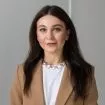As the use of artificial intelligence ("AI") in creating artwork is gaining popularity, questions regarding the applicability of copyright laws to such artworks are growing. Generally, it is assumed that humans are somewhat involved in any work of art, even though a majority of copyright laws do not explicitly address Al-generated art.
The United States
In the United States (the "US"), for instance, "an image generated through artificial intelligence lacks the "human authorship" necessary for protection". Therefore, in case an artwork has been created entirely by the software, there is no copyright protection for such work.
When it comes to an artwork created by AI but with a significant human input, the recent case of Zarya of the Dawn has to be examined.
In September 2022, the US Copyright Office (the "USCO") granted a first of its kind registration for a comic book generated with AI assistance, which was rather surprising and revolutionary. Kristina Kashtanova, the artist who created Zarya of the Dawn explained that she had been asked by the USCO to provide the details of the process showing that there was a substantial human involvement in the process of creation of this graphic novel.
Nevertheless, after a couple of months of granting such copyright registration, USCO contacted the artist informing her that it had initiated a proceeding to reverse its earlier decision granting copyright to a comic book that was created using AI, emphasizing that copyrighted works must be created by humans to gain official copyright protection.
The author has been granted 30 days to appeal USCO's decision during which the copyright is still active and her lawyer has already submitted a letter to testify regarding the human involvement in the creation of AI art arguing that it could enjoy copyright protections since the creative process of using generative AI is "essentially similar to the artistic process of photographer's selection of a subject, a time of day, and the angle and framing of an image."
Presently, the case is ongoing, with hopes that it will bring more clarity on AI-generated works eligibility to receive copyright protection and serve as a precedent.
The European Union
Even though European Union (the "EU") copyright law consists of eleven directives and two regulations, harmonising the essential rights of authors, performers, producers and broadcasters, copyright is still mostly governed by national laws of each and every Member State of the EU, specifically with respect to rules on attribution of authorship and allocation of ownership.
Generally, under EU copyright law in order to have copyright protected, two conditions must be fulfilled:
- the creation must be a "work"; and
- one must be the original author of the mentioned work or have obtained the copyright by transfer.
The EU acquis explicitly harmonises the following specific categories of copyright-protected subject matter: computer programmes, databases, photographs, and – possibly – works of visual art. Such works are protected in case they are "original in the sense that they are the author's own intellectual creation". In its landmark Infopaq judgment of 2009, the Court of Justice of the EU (the "CJEU") established an autonomous concept of the EU law of the work as "the author's own intellectual creation" ("AOIC"), which was further confirmed by the CJEU in Levola, Funke Medien and Cofemel judgements of 2019.
When it comes to the "author", it appears that a work created must be of the intellectual creation of a human. This being said, the CJEU's reasoning in the Painer judgment has to be taken into account, since it concerns the subject matter created with the aid of machine, namely, portrait photograph. The CJEU established that a portrait photographer "can make free and creative choices in several ways and at various points in its production. By making those various choices, the author of a portrait photograph can stamp the work created with his 'personal touch'. Consequently, as regards a portrait photograph, the freedom available to the author to exercise his creative abilities will not necessarily be minor or even non-existent".
Consequently, in case a work expresses original human creativity, it will benefit from copyright protection like a work created using any other tool. Nevertheless, the question is if an AI can be treated as such "any other tool".
In 2020, the European Commission proposed a "four-step test" in its "Trends and Developments in Artificial Intelligence – Challenges to the Intellectual Property Rights Framework" report. Such test provides the following interrelated criteria to be met for an Al production to qualify as "work":
- Step 1 – Production in literary, scientific or artistic domain;
- Step 2 – Human intellectual effort;
- Step 3 – Originality/creativity (creative choice);
- Step 4 – Expression.
Pursuant to the above-mentioned criteria the Al-creations produced with human intervention might be classified as "work" in some circumstances and, hence, be protected under the EU copyright law. Artworks generated entirely by Al; on the other hand, are unlikely to qualify as "work", thus, unlikely to be protected under the current EU copyright law.
It has to be highlighted though that the CJEU is not bound by the Commission's four-step test proposal, and the legislative developments on this matter are being followed.
Malta
In Malta, the Copyright Act (Chapter 415 of the laws of Malta) follows EU's model in relation to copyright protection. It provides a list of works eligible for copyright protection, including artistic works, audiovisual works, databases, literary works, musical works, and specifies that a work has to be created by the "author" being "the natural person or group of natural persons who created the work eligible for copyright". Therefore, in order for a work to enjoy copyright protection it has to be necessarily created by a human.
For work created with an assistance of a tool, including AI, it is likely that principles established by the CJEU and the EU in general are to apply.
The United Kingdom
The position in the United Kingdom (the "UK") is rather forward thinking. Indeed, pursuant to Section 178 of the UK Copyright, Designs and Patent Act of 1988 "computer-generated", in relation to work, means that the work is generated by computer in circumstances such that there is no human author of the work". Consequently, under UK law the copyright may subsist in the work generated entirely by an AI. It has to be highlighted, that in case of the latter, the legislators reduced the timeline of such protection to 50 years, whereas a human created work enjoys copyright protection for 70 years.
Furthermore, Section 9 of the above-mentioned Act provides that "in the case of a literary, dramatic, musical or artistic work which is computer-generated, the author shall be taken to be the person by whom the arrangements necessary for the creation of the work are undertaken". Therefore, in case a work expresses original human creativity, even if it is created with an AI assistance, it will benefit from copyright protection like a work created using any other tool.
Concluding Remarks
Despite the "common" belief that a work can be only be protected by copyrightif it is created by a human, one must bear in mind that copyright laws are not uniform around the world, especially when it comes to AI-generated work, or a work created with the assistance of AI. Currently, apart from the UK as described above, AI artwork is also subject to copyright in Ireland, India and New Zealand.
The content of this article is intended to provide a general guide to the subject matter. Specialist advice should be sought about your specific circumstances.


